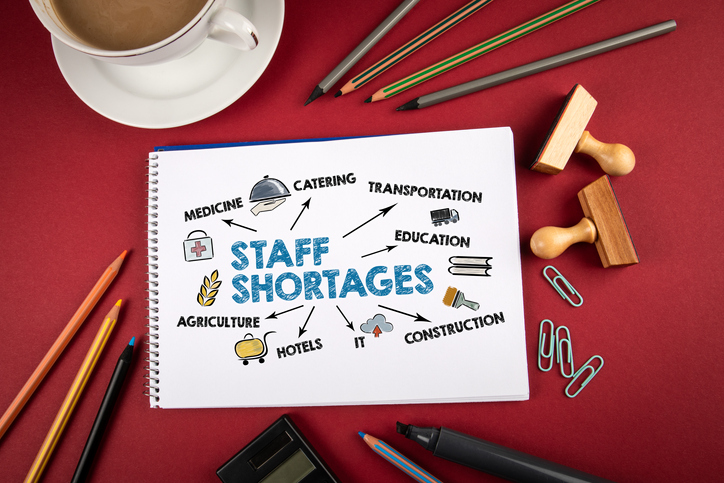 This past weekend my family and I went to a local chain restaurant for dinner. As we entered, I was surprised to find the dining room virtually empty given it was dinner time on a Friday night. I was even more surprised to find a lobby full of people and to learn from the hostess that the wait would be almost an hour.
This past weekend my family and I went to a local chain restaurant for dinner. As we entered, I was surprised to find the dining room virtually empty given it was dinner time on a Friday night. I was even more surprised to find a lobby full of people and to learn from the hostess that the wait would be almost an hour.
As we pondered whether to stay, my nine-year-old son asked why we had to wait, since there were so many empty tables in the restaurant. I explained that the problem wasn’t a lack of tables, but a lack of workers to serve the tables. He then asked where all the employees were. That question I did not have an answer for. It’s a question I have been asking myself for quite some time. With wages and cost of living at near all-time highs, how can we be experiencing such labor shortages? Where did all the workers go?
For many on the political right, an argument was made early on in this labor crisis that free money from the government was to blame, with many unskilled workers able to make as much or more by simply staying home and relying on government checks for their sustenance. However, most of these stimulus programs ended months ago yet people have not returned to work in substantial numbers.
Those on the political left blamed Covid as the primary cause. They argued that fear of exposure to the deadly virus, was causing many to opt out of the work force altogether. But as case counts and mortality rates have dramatically gone down, the demand for more workers has not.
So, what is the cause? A new report from the Federal Reserve Bank of St. Louis provides some insight. They conclude there are two primary groups that have not come back to work. Those who decided to retire early, and those who decided to become full-time caretakers at home. The first group seems fairly obvious, when businesses went virtual, or closed altogether, many employees near retirement age made the decision to simply retire earlier than planned and left the workforce permanently. According to the Reserves data, over 2.4 million more people retired since the onset of the pandemic than would have otherwise.
That is a huge number and one that certainly impacts overall employment numbers. The other group they identify are those who chose to stay home as caregivers for a family member despite being able to go back to work. According to this same study, 2.7 million women left the workforce since March of 2020 and 21.5% of them listed caretaking of family members as the reason why. While the number of men who decided to stay home was significantly less, they also had an impact on employment numbers.
I can’t say anyone in my family could be classified as either of those two groups that left the workforce, but we certainly considered it. My wife Rebecca and I discussed seriously the economic and emotional ramifications of her choosing to leave her job as a teacher to become a fulltime stay-at-home mom. While she ultimately decided to return the classroom, I can understand why many others chose to never return to their jobs.
Covid brought with it a shift in mindset and priorities that may long outlast the virus itself. I believe many people returned to a simpler, more balanced way of life, and have come the realization that money and career is not all it is cracked up to be.
Only time will tell if this phenomenon continues, part of me believe we will slowly revert back to the mean of workforce numbers. When that happens competition for jobs will naturally reduce wages, and the cost of goods will become lower. But for now, with unemployment at roughly 3.6% and businesses begging people to work, I’m tempted to use this labor shortage to my advantage, and go back to waiting tables once or twice a week.
